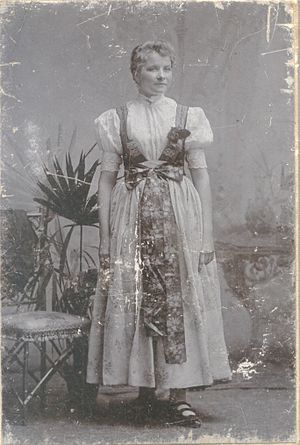Silesians (Silesian: Ślůnzoki; Silesian German: Schläsinger; Polish: Ślązacy; Czech: Slezané; German: Schlesier) are the inhabitants of Silesia region, located in a territory divided by the current boundaries of Poland, Germany and the Czech Republic. It is also considered that Silesians belong to a Polish ethnographic group, and speak a dialect of Polish. They are of Slavic extraction; but because Silesia for a long time belonged to Germany, they have been deeply influenced by German culture.There have been some debates on whether or not a group of Silesians (historically Upper Silesians) constitute a distinct nation. In modern history, they have been often pressured to declare themselves to be German or Polish or Czech and embrace the language of the current governing nation. Nevertheless, 847,000 people declared Silesian nationality in the Polish national census in 2011 (including 376,000 who declared it as their only nationality, 436,000 who declared it as their first nationality, 411,000 who declared it as the second one, and 431,000 who declared it jointly with Polish nationality (173,153 in Poland in 2002), maintaining its position as the largest minority group. About 126,000 people declared themselves as members of the German minority (58,000 declared it jointly with Polish nationality), making it the third largest minority group in the country (93% of Germans in Poland live in the Polish part of Silesia). 12,231 people declared Silesian nationality in the Czech national census in 2011 (44,446 in Czechoslovakia in 1991) and 6,361 people declared Silesian and Moravian nationality in the Slovak national census.During the German occupation of Poland in 1940, Nazi authorities conducted a census in the East Upper Silesia. 157,057 people declared Silesian nationality (Slonzaken Volk), whereas the Silesian language was declared by 288,445 people. However, the "Silesian nationality" (Slonzaken Volk) could only be declared in the Cieszyn part of region (before World War I part of Austria-Hungary), while approximately 400,000–500,000 respondents from the other areas of East Upper Silesia, that before World War I were parts of Prussia, who declared "Upper Silesian nationality" (Oberschlesier), were assigned to the German nationality category. After World War II in Poland, the 1945 census of the population showed a sizeable group of people in Upper Silesia that declared Silesian nationality. For instance, according to police reports, in Zabrze around 22% and in Strzelce County (both in the Recovered Territories) around 50% of the population considered themselves Silesian.Words to create an organization – the League of Silesia, whose members were encouraged Silesian nationality was first publicly put forward on the wave of the Spring of Nations. Its author was painter and poet Jan Gajda, who published his "Appeal to the people of Upper Silesia" (Odezwa do ludu górnośląskiego) on 7 April 1849 in the Journal of Upper Silesia. Later, the term Silesian nationality appeared both in the Prussian Upper Silesia, as well as Austrian Silesia, but until 1908 none of them was not clear. Emergence of the Silesian People's Party in 1908 initiated the struggle for national and countries identity of Silesians. At the international talks on the future of Silesia, Józef Kożdoń (leader of Silesian People's Party) stipulated the creation of an independent state of Silesia. The idea attracted the International Commission, but have fallen due to protest the French Prime Minister Georges Clemenceau and the representative of France - Grenard. Silesian People's Party cooperated with the Union of Upper Silesians, who also support as a national identity Upper Silesians, advocated the creation of an independent, neutral Republic of Upper Silesia on the model of Switzerland and Belgium, reaching in 1921 the number of about half a million members (half the adult population). In 1918 secret Committee of the Upper Silesian, distributed unsigned underground leaflets calling for the establishment of an independent Republic of the Upper Silesia. In 1925–1934, the Association of Upper Silesians Defense (Związek Obrony Górnoślązaków) demanded recognition of Silesian nationality, as a national minority in Poland.




Comentar
0